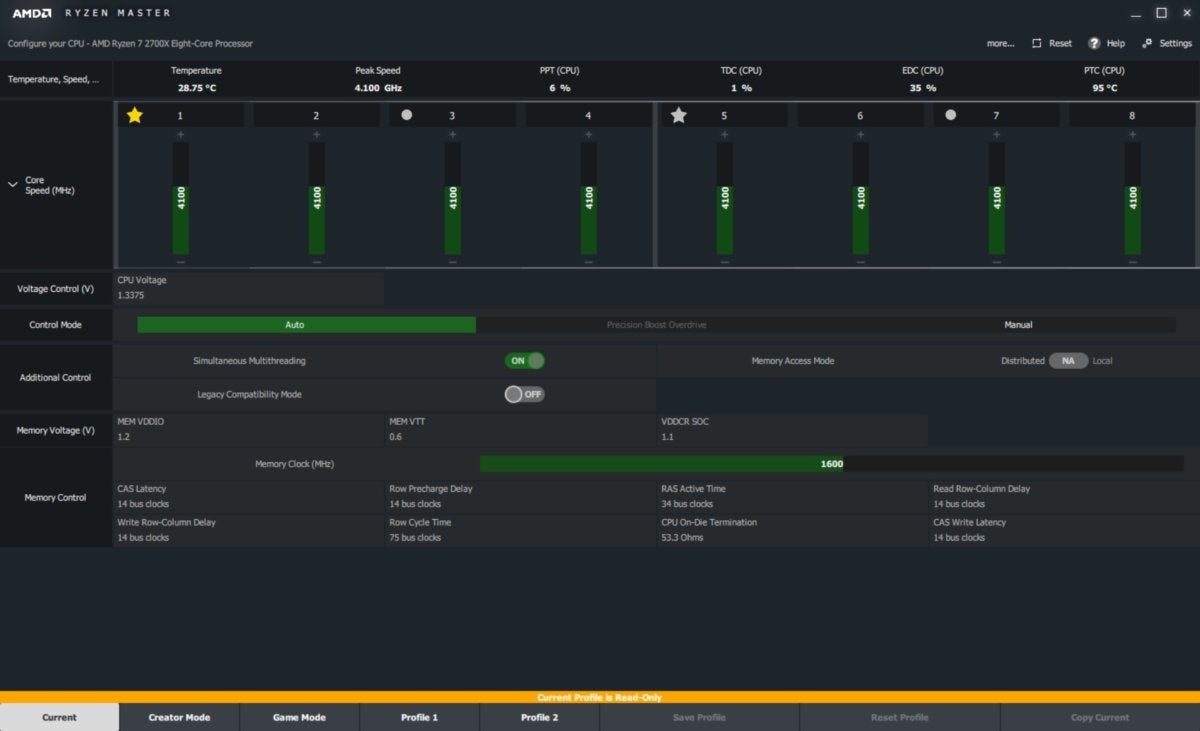
Using Windows’ default Balanced power profile, you’ll see Ryzen clocking itself up to 4.1GHz if your setup supports XFR, then all the way down to 2.2GHz at idle. It’s especially useful if you want to know exactly what AMD’s Precision Boost and XFR technologies are doing to your Ryzen CPU. To that end, there’s a real-time graph of per-core clock speeds and the CPU’s temperature at the top of the Ryzen Master interface, accessible by clicking the tiny >icon in the upper-left. The temperature and clock-speeds graphs at the top of Ryzen Master. The core of becoming a Ryzen Master is knowing exactly what your chip is doing right now. The most important thing to understand when you’re overclocking Ryzen is that the chip has two modes of operation: Normal Mode and OC Mode. Windows updates may disable HPET, so if the app starts popping up warnings long after you’ve overclocked your system, run the script again.

After running the script and restarting your system, Ryzen Master will work normally. If you don’t have HPET enabled you’ll be greeted with an error message when you try to apply your overclocking profile. In order for Ryzen Master to show you accurate real-time graphs of voltages and clock speeds, you’ll need to run the HPET.bat script in the Ryzen Master install folder to make sure you have HPET (High Precision Event Timers) enabled in Windows 10. (Click any image in this article to enlarge it.) What happens if you try to use Ryzen Master with HPET disabled.

As such it has its own installer and desktop icon.

Unlike WattMan, which comes bundled with the Radeon Settings tool alongside AMD’s graphics drivers, Ryzen Master is a stand-alone application. Assuming you have a compatible motherboard, head over to the Ryzen Master landing page and download the app to get started on the path to mastering Ryzen.


 0 kommentar(er)
0 kommentar(er)
